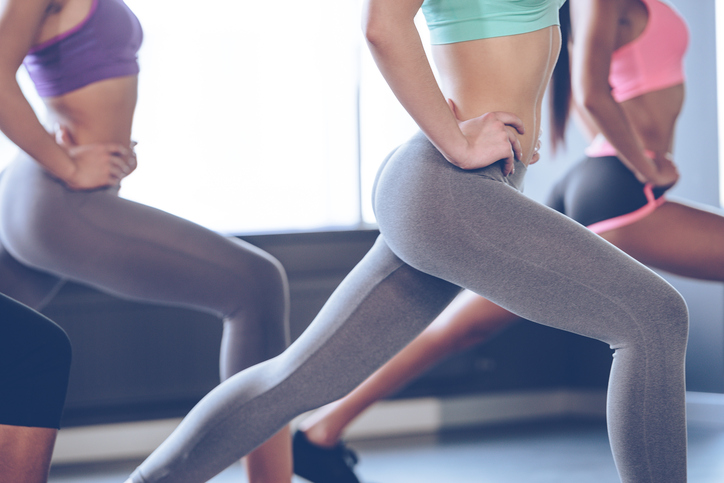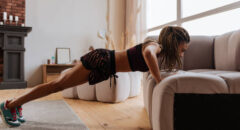
Do you want better posture, a more defined lower body and exercises that will get rid of that bothersome cellulite? Lunges and squats are two exercises you can do that will help you maximize your workout and get the results you’re looking for. Both activities provide an excellent way to tone your lower body, contribute to improving your posture, strengthen your core and engage many of your muscle groups throughout your body. Get the full benefits of lunges and squats by learning the right way to do them so you can reduce your risk for knee injury.
Lunge Benefits
Lunges are an excellent addition to your workout routine. They can be done anywhere and without any extra equipment. Once you master your form in doing lunges, you can add weights, additional repetitions or widen your stance on an inclined surface such as a chair or workout bench which will take your lunge to the next level.
Lunges target your quads but also help to shape your glutes, hamstrings, calves and core muscles. In essence, lunges are an excellent way to tone and shape your lower body. They are also back friendly, lessening your risk of straining your back. Use your abdominal and lower back muscles for this workout move and it will strengthen and stabilize your core providing balance and coordination for your body.
Lunges also help with improving your posture. Because you perform lunges unilaterally, it helps you to have better balance and coordination. Lunges even out muscular imbalances in control and strength. If you focus on improving the weaker side, lunges develop these muscles quicker aiding you with physical activities and lowering your risk for injury.
How to Perform Lunges Safely
Kadeem Howell, DPT, CFSC, PES, CES, owner of NYC-based company Stand Tall, is a doctor of physical therapy, certified functional strength coach, performance enhancement specialist, and corrective enhancement specialist. Kadeem offers the following tips to do lunges safely:
“With lunges one of the most important things to avoid is “caving in” of the knees or as I would call it “valgus collapse.” When the knees cave in we put ourselves at risk of a serious knee injury such as an ACL or meniscus tear. A good cue to correct this is try tracking our knees over our second toe when going into a squat or lunge position.”
He goes on to say that before engaging weights, make sure you have the prerequisite mobility in the ankle and stability in the hips to perform these activities safely, as they can be dangerous to the knees if performed incorrectly.
Squat Benefits
Squats are an excellent way to build your core muscles, help you with upright posture and shape your glutes – also known as your booty muscles. Squats reduce injury when doing other daily activities or sports, help with flexibility and yes, aid digestion! Because squats improve your circulation, getting your blood pumping throughout your body, this means your organs and muscles benefit as well. When this happens, regular squatting helps to get rid of cellulite! I am sold on this benefit, and sure you will be as well. If you do your squats properly, there is less risk for knee and back injury.
How to Perform Squats Safely
David Jeanty, a fitness expert, offers some advice on how to safely perform squats with these five tips:
- Stand with your chest up and shoulders back.
- Engage your core – tension equals stability and strength.
- Hinge your hips back on the way down, sitting back onto your heels.
- Inhale on the way down / exhale up.
- Drive through your heels on the way back up.
Adding these two exercises into your routine can make a huge difference in your exercise routine and your body, but only if performed correctly and safely.








